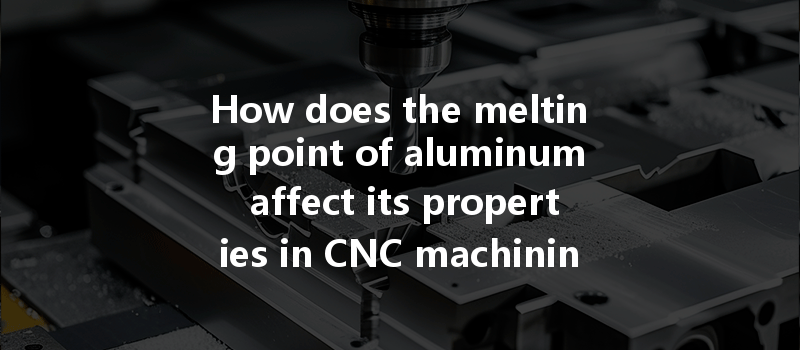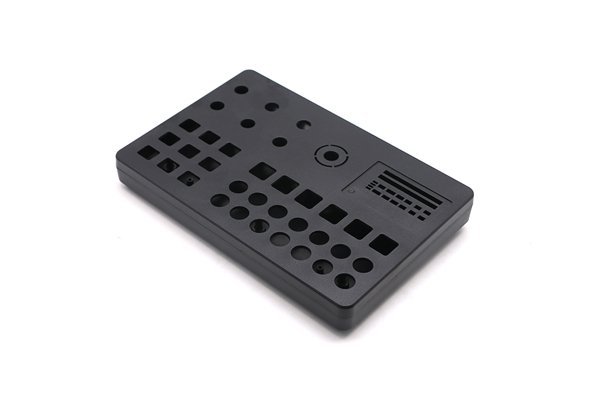Did you know that aluminum has the highest strength-to-weight ratio of any metal? This unique property has made it an ideal choice for various industries, including aerospace, automotive, and construction. As manufacturers continue to harness advanced CNC (Computer Numerical Control) machining and casting techniques, understanding the melting point of aluminum becomes essential. This knowledge not only informs material selection but also affects the overall performance and longevity of the finished products.
In this blog, we will delve deep into the relationship between the melting point of aluminum and its properties during CNC machining and casting. We will outline how these factors impact production efficiency, product quality, and operational costs, providing a detailed guide to optimizing aluminum applications in modern manufacturing.
Understanding the Melting Point of Aluminum
The melting point of aluminum typically ranges from 660.3°C (1,221°F) for pure aluminum to higher temperatures for various alloys. Different aluminum alloys exhibit unique melting points influenced by the alloying elements. For instance, Aluminum 6061 has a melting range between 600 to 650°C, while Aluminum 7075 melts at approximately 480-635°C.
Knowing the melting point is crucial for manufacturers, as it will dictate the appropriate temperature for machining and casting operations. If the temperature exceeds the melting point, materials may become too soft, leading to inaccuracies or distortions during machining.
The Impact of Melting Point on CNC Machining
The melting point of aluminum informs tool material selection and design. Tools made from high-speed steel (HSS) or carbide are often used in CNC machining due to their heat resistance. Understanding the melting point ensures that these tools remain effective throughout the machining process.
Additionally, the geometry of cutting tools also depends on the properties of aluminum. Higher melting points allow for sharper angles and precise cuts, enhancing machining efficiency and surface finish quality.
Temperature management is vital during the CNC machining of aluminum. The heat generated from cutting can affect the material properties, leading to unwanted thermal deformation or warping. Maintaining optimal cutting temperatures—typically below the material’s melting point—is essential to mitigate these effects.
Utilizing cooling methods, such as flood coolant or mist systems, can help manage the heat generated during machining. Proper coolant application can extend tool life, improve surface finish, and enhance the precision of machined components.
The melting point plays a significant role in achieving a desirable surface finish. If the cutting temperature exceeds the aluminum’s melting point, it may lead to melting at the cutting edge, resulting in a rough surface finish and compromised dimensional accuracy. To achieve a polished finish, manufacturers must monitor and control the machining environment closely.

The Impact of Melting Point on Casting Processes
The melting point of aluminum directly impacts the casting temperature. In casting processes like sand casting or die casting, manufacturers need to ensure that the molten aluminum is fully liquefied before pouring into molds. This means heating the aluminum above its melting point for optimal fluidity.
For instance, when dealing with high-performance aluminum alloys such as 7075 or 6061, manufacturers must consider the specific melting ranges to optimize casting parameters.
Casting shrinkage refers to the dimensional changes that occur when molten aluminum cools and solidifies. Understanding the melting point and cooling process is essential for managing shrinkage and avoiding defects in finished parts.
Different alloys have varying levels of shrinkage characteristics. For example, aluminum castings typically shrink between 0.5% to 1%, depending on the alloy. Strategically designing molds that account for this shrinkage can mitigate issues like warping and misalignment during the casting process.
The mechanical properties of cast aluminum, such as ultimate tensile strength (UTS), fatigue strength, and ductility, are also influenced by its melting point. Cooling rates and solidification behavior affect the microstructure of cast aluminum, which in turn influences its performance in applications.
Optimizing the casting conditions, such as cooling rates and alloy composition, allows manufacturers to tailor the mechanical properties of aluminum components to meet specific application requirements.
The melting point of aluminum is not just a trivial detail—it is a critical factor that influences a myriad of important aspects in CNC machining and casting processes. From tool selection and temperature control to surface finish quality and casting shrinkage, understanding how the melting point affects aluminum’s properties is essential for achieving high-quality manufacturing outcomes.
In today’s fast-paced industrial environment, businesses must prioritize efficient material selection and process optimization to remain competitive. It’s therefore vital for engineers, manufacturers, and stakeholders to be well-versed in the implications of melting points on aluminum applications.
Take the knowledge from this blog and consider how you can apply it to elevate your own operations. As the demand for aluminum continues to rise, understanding its melting point will equip you with the insight needed to innovate, reduce costs, and effectively adapt in pursuit of excellence.
Stay informed, invest in the learning process, and always strive for precision—because in the world of CNC machining and casting, even the smallest detail can make a significant difference.






